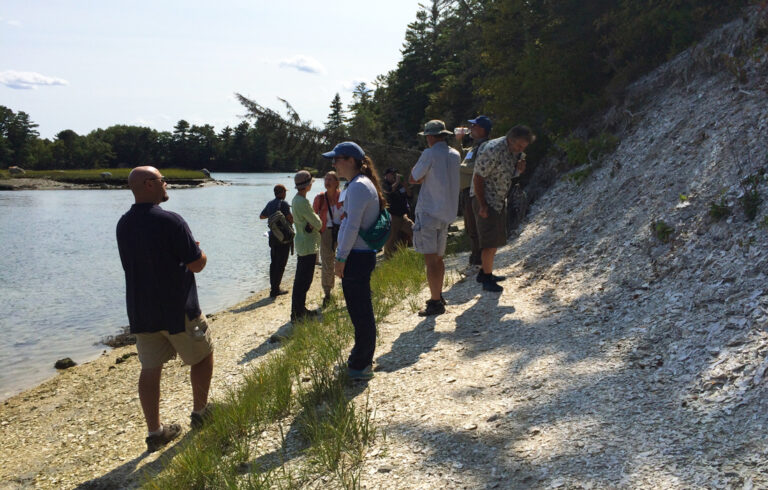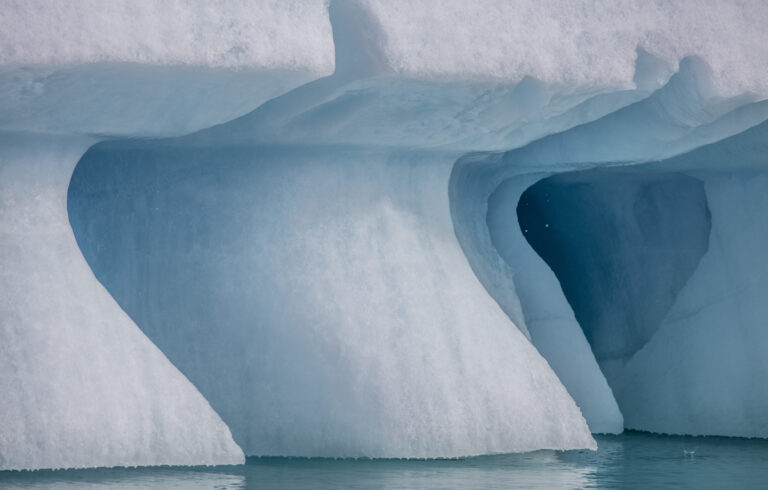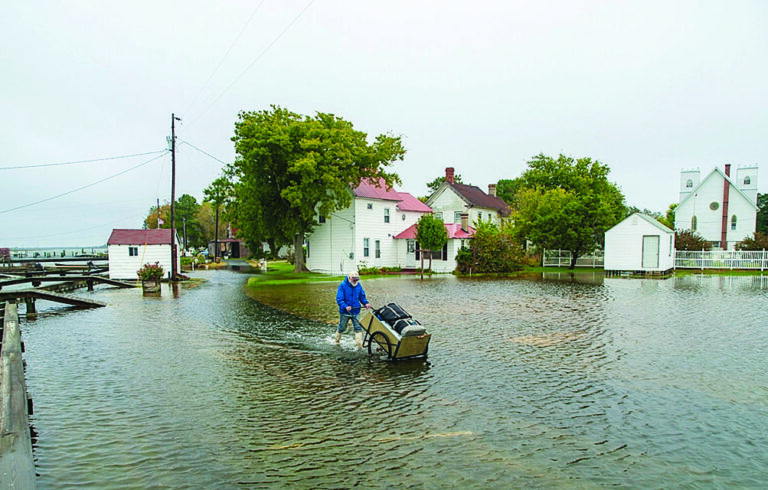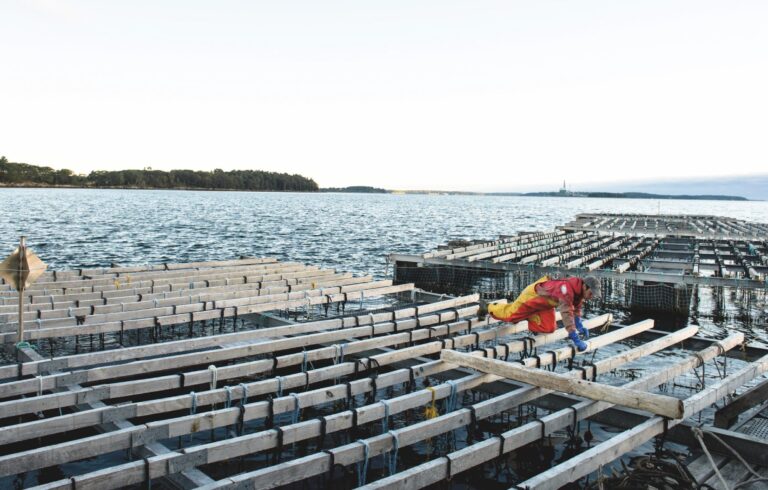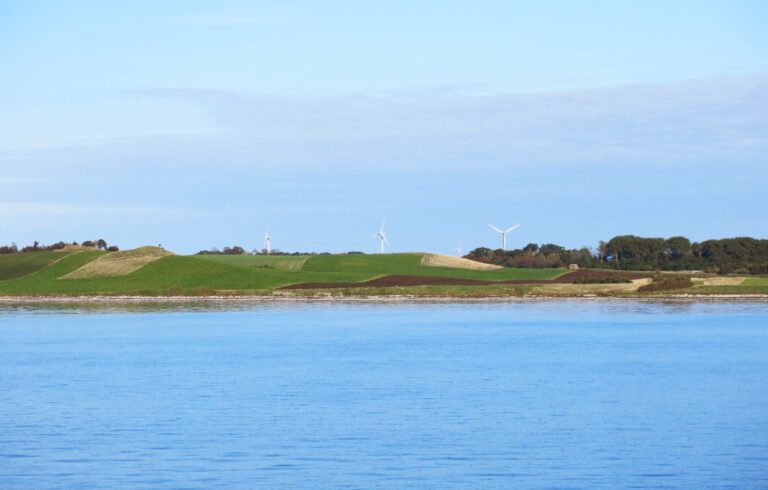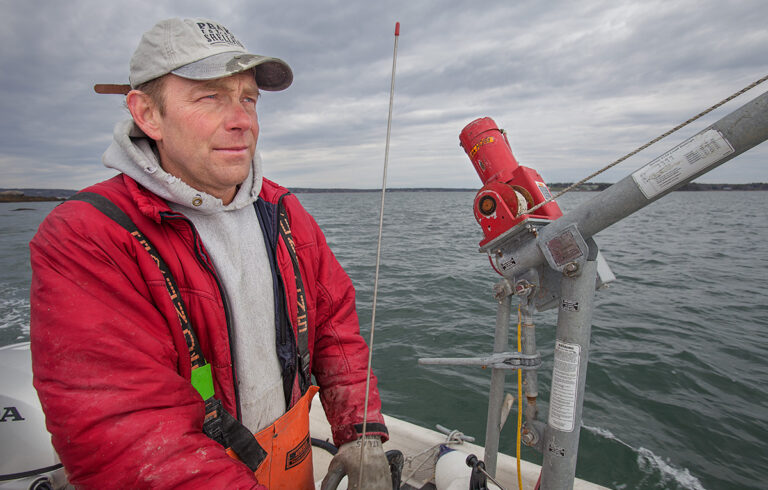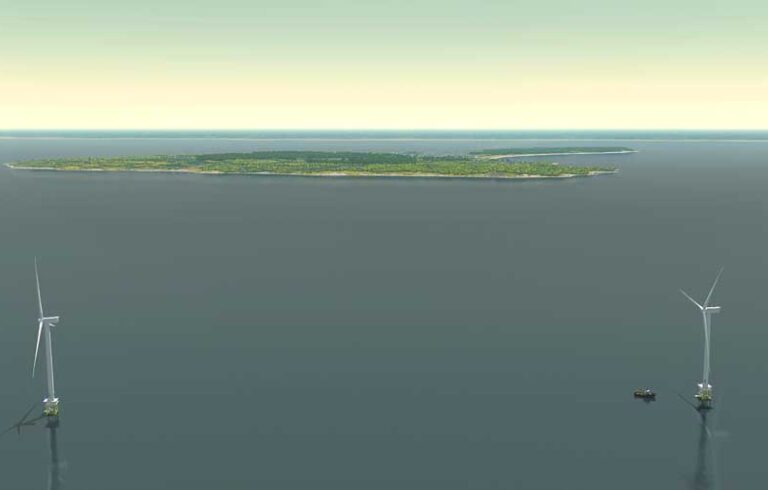Island Journal
More Than a Pile of Shells
Up a tidal river, around a blue-green bend where the banks begin to steepen, the wooded shoreline is interrupted by a tall white cliff. Weathered bits of shell and dust tumble down the exposed face, revealing layer upon layer of oyster shells.
Pockets of charcoal and fire-cracked rock are signs of human activity from millennia ago, when ancestors of the Wabanaki people came together to harvest oysters from the warm, brackish river in what is now known as Damariscotta and Newcastle. On both banks, they deposited the shells, one at a time, basketful by basketful, season after season. Eventually, the piles grew into small mountains some 30 feet tall.
Around 2,000 years ago, the local people stopped adding to the piles. Soil and trees grew over the tops, but the middens were massive and the river kept the edges washed clean, and they continued to attract attention after Europeans came on the scene. SEE MORE

